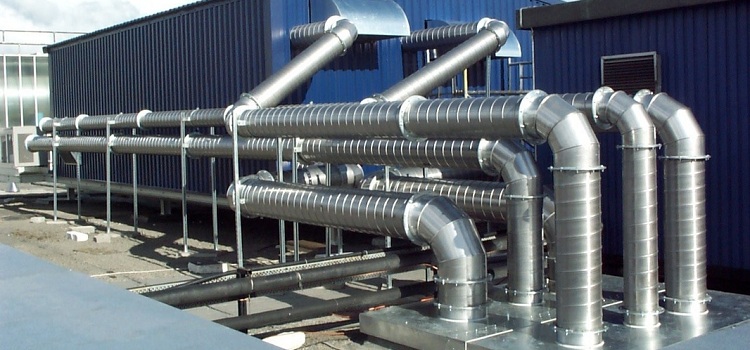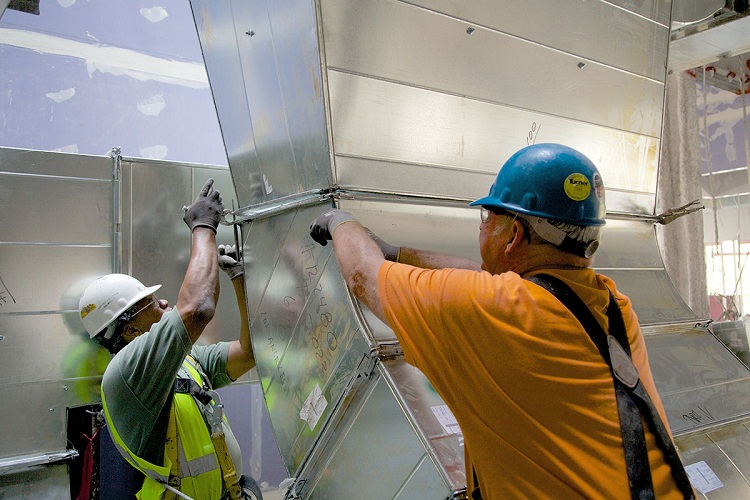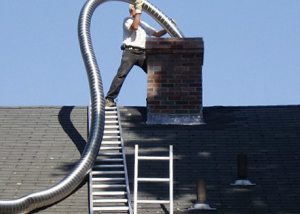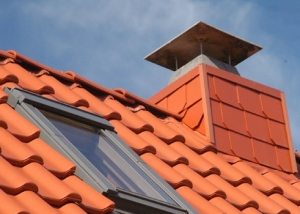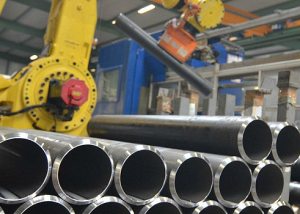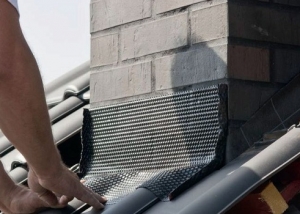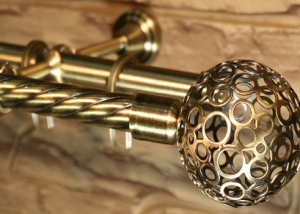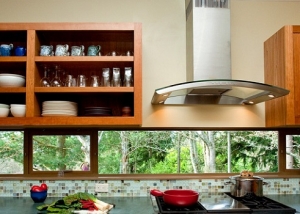Galvanized air ducts are used in supply ventilation systems, as well as in air conditioning systems, duct, roof and central. As a rule, they are installed where it is necessary to take into account the difficulties associated with the influence of such factors as the presence of fire hazard, smoke, high pressure, high temperature, aggressive, in terms of chemical activity, environment.
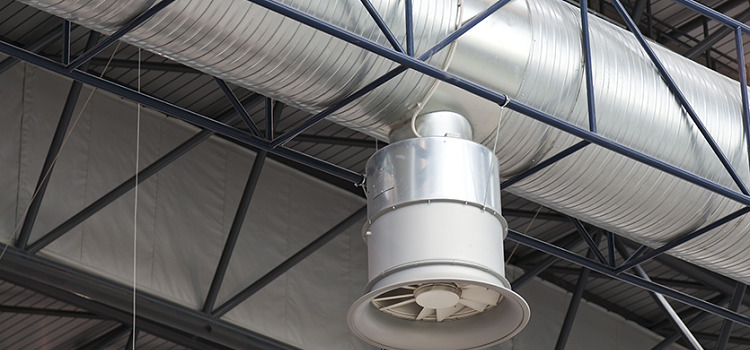
Galvanized steel - a durable and corrosion-resistant material, one of the best options for the production of air ducts for various purposes
Content
How air ducts made of galvanized steel are classified
It is customary to distinguish galvanized ducts in several ways. First of all, based on the shape of the cross section. According to this indicator, there are:
- galvanized steel rectangular ducts. Such structures, as a rule, have a small cross-section and wall thickness (usually set within 0.5-1.5 mm), due to the potentially lower air supply, it is provided less than that of circular devices.
On a note! Rectangular galvanized ducts are considered as more favorable in terms of compact placement and aesthetic attractiveness, which avoids the additional cost of masking and decoration.
- round. They have no restrictions related to the size of the product. Rectangular devices are superior in a number of essential indicators, including functional efficiency and cost, simplicity and speed of installation work.
Depending on the connection method used when installing the duct:
- bandage. It is applied only with a round section;
- nipple (sleeve);
- bell-shaped;
- welded;
- folded;
- flanged.
The scope dictates the giving of structures specific properties, so they are:
- flexible;
- fire retardant;
- semi-rigid;
- insulated. A special insulating layer is provided in the package.
Based on the design features, it is customary to talk about devices:
- straight-seam;
- spiral-wound;
- spiral welded.
Given the speed of movement of the air environment, structures can be:
- high-speed (with an air velocity of more than 15 m / s);
- low speed.
Technical specifications and certificate of conformity provide for operation at a certain working pressure. It is also one of the parameters used in the classification of ducts by this parameter:
- high (from 2 kPA);
- medium (from 9 hPA to 2 kPA);
- low (up to 9 hPa).
Design features arising from the purpose
The production of galvanized steel ducts initially arose as a result of the needs of the Navy, but the versatility of the design allowed the device to be distributed to many other areas, including industrial and domestic.
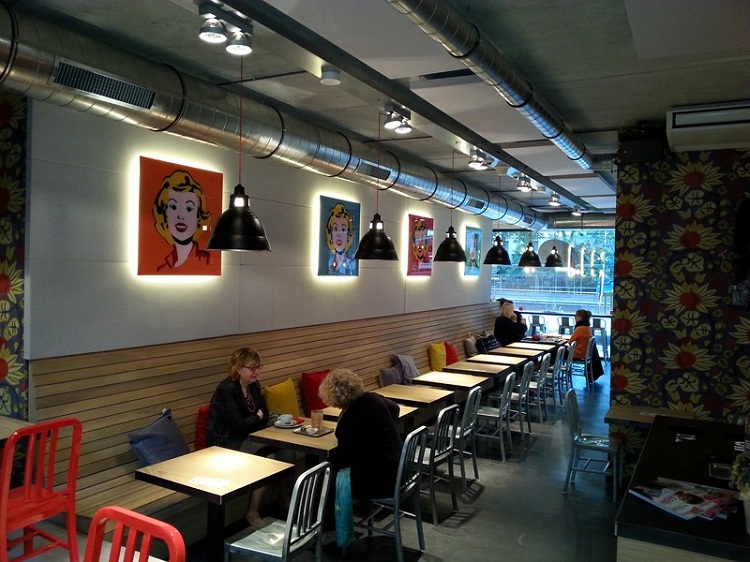
Galvanized steel ventilation systems can be found everywhere - in public institutions, residential buildings, in enterprises
The use of galvanization is caused, for the most part, by the complexity of the conditions in which the installed ventilation equipment should be operated. Extreme operation is set:
- aggressive chemical environment;
- high working pressure;
- significant temperatures;
- the presence of an open source, in connection with which an increased fire resistance limit of air ducts is required that can withstand a temperature of five hundred degrees according to the norms of SNiP;
- specific climatic features.
Good to know! Ventilation is set in accordance with the rules established by SNiP 41-01-2003 and SNiP 11-33-75, as well as a number of technical specifications, mainly 36-736-93 and other regulatory documents.
The manufacture of galvanized steel ducts allows the installation of forced ventilation:
- in a residential building, office or public building;
- trade, warehouse and industrial premises.
Installation can be done with the aim of:
- to remove smoke generated at the location of the source of high temperature, which becomes possible, since a strong steel sheet is present in the structure;
- to make natural or forced ventilation of the premises;
- ensure the operation of the system outside buildings. The presence of a protective layer made of zinc, can withstand the effects of open air, UV radiation, precipitation.
Laying the system is not always feasible in a straight line, when you can do with the use of pipes. In cramped conditions, when it is required to perform a significant number of turns and walk around corners, shaped elements are widely used:
- sidebars;
- crosses;
- bends;
- adapters;
- tees, etc.
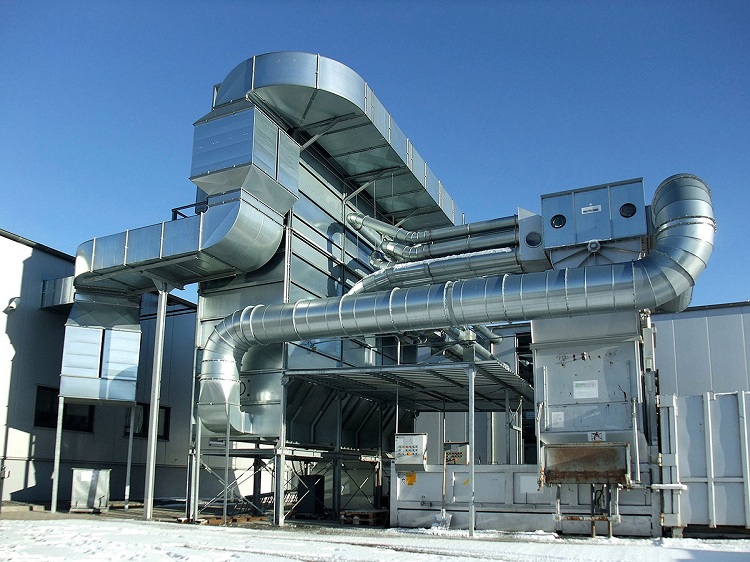
Air ducts have different configurations, corners, bends and other shaped elements are used to give the desired shape
Modern industrial manufacturing of galvanized ducts
With the relative simplicity of production, the presence of qualified personnel with the skills to control a computerized process is required. Building norms and sanitary rules strictly regulate the production of products for which certificates are issued.
When using straight-seam pipes with a length of 1.5 - 2.5 meters, usual for private houses, where a large length is not required, but a significant number of shaped elements will be needed, the edges of the steel sheet are fixed using a nipple or flange. Cutting is performed automatically when receiving standard sizes; when receiving a task with specially defined parameters, special equipment is connected. With rollers, the billet is turned into a tube with a given diameter, which is fed to the folding mill for processing the longitudinal edge.
Note! An air duct made of straight-line pipes round galvanized compared to a rectangular one will be cheaper, it will be easier to install and exhibit better aerodynamic properties.
For the manufacture of spiral-wound pipes, a strip of galvanized steel with a width of 137 mm is taken. It is twisted in a spiral, connecting with a seam inward with fasteners of the castle type. To get a product with a cross section:
- in 130-350 mm take a sheet with a thickness of 0.55 mm;
- 360-800 mm - 0.7 mm thick;
- in 850-1250 mm - millimeter.
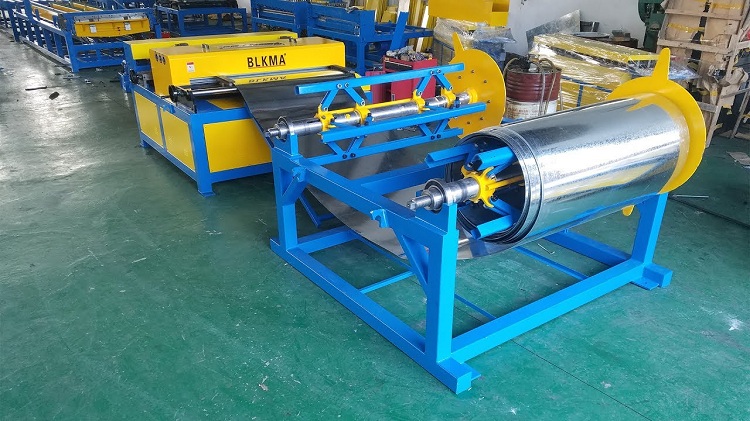
The thickness of the metal sheet, which is taken for the manufacture of products with a cross section of 850 mm, must be at least 1 mm
The standard length of such a spiral-wound pipe produced in the factory is three to six meters, with special wishes of the customer it can be changed (up to 12 m).
Products with a spiral seam are characterized by increased indicators:
- strength;
- stiffness provided by the ribs;
- lightness, as the weight of the structure is reduced due to the use of thin steel sheet;
- tightness (class P).
When air passes through spiral-wound pipes, it acquires additional rotation, which leads to an increase in speed and a decrease in the noise level.
Having received the manufactured pipes without a joint at one corner, further work is carried out in several stages:
- connection is made on a special machine;
- equip the necessary curves;
- supply facade and other elements to send to the customer.
Production is carried out in strict accordance with SNiP, the certificate of quality is the presence of constant demand.
Advantages and disadvantages of ducts made of galvanized steel
The prevalence of air ducts, for the manufacture of which galvanized steel was used, is explained by a combination of a number of advantages derived by the consumer when installing the structure from such a material.
Among the advantages it is customary to list:
- insignificant load on the design of the room or building where the installation is made;
- structural strength and resistance to aggressive environments;
- the presence of excellent aerodynamic characteristics;
- simple and quick installation, which contributes to the insignificant weight of the structure and the presence of a wide range of fittings. Delivery to the installation site will also not cause difficulties;
- the insignificance of the costs of additional sound insulation and, if necessary, thermal insulation;
- high heat resistance and ability to withstand the effects of open flame;
- relatively low cost, which is significantly lower than other metal counterparts;
- ease of maintenance of the installed structure;
- Guaranteed service life of at least ten years. The presence of a galvanized layer eliminates the costs associated with additional primer and painting. Even under the influence of street air, the development of corrosion processes will slow down significantly;
- versatility that allows you to install the structure in rooms for various purposes and outside buildings, as well as adapt it to individual characteristics at the location.
Designs with a circular cross section are characterized by:
- higher aerodynamic qualities;
- lower cost;
- lower costs for transportation and storage;
- simplicity of leaving, in particular, cleaning;
- simplicity and low cost of installation.
The installation of a rectangular duct allows:
- choose the right configuration, taking into account the tightness of space, placement is possible in the presence of a false ceiling;
- to achieve the aesthetic attractiveness of the room without the use of any additional means or decorative elements masking the design.
The list of disadvantages of galvanized steel ducts is limited to a couple of points:
- Significant mechanical stresses can lead to deformations that interfere with the operation of the ventilation system. Not a single similar design made of metal or other materials has been spared this disadvantage.
- By the interaction of air with a galvanized surface, characteristic unpleasant subtle sounds are generated, amplified with increasing wind speed in contact with the structure located outdoors.
The popularity of galvanized ducts shows that consumers are ready to neglect the listed disadvantages, since they are outweighed by the advantages of the design. The variety of assortment, the availability of fittings allow consumers to choose the design option that is optimal for installation in a particular facility, whether it is a private home, an industrial building,commercial or public use.
